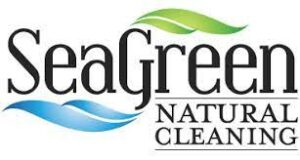What’s The Ingredients In Your Cleaning Products?
What’s The Ingredients In Your Cleaning Products?
The facts are that health problems have been linked to environmental toxins in the home. These toxins are causing problems in our children, everything from headaches to pediatric cancer. Our bodies absorb these toxins through our skin and by inhaling. In fact, the EPA consistently ranks indoor air quality among the top five environmental risks to human health.
Since cleaning products aren’t food, beverages or drugs meant to be ingested, they aren’t regulated by the U.S. Food and Drug Administration. However, makers are required by the U.S. Environmental Protection Agency (EPA) to list ingredients that are active disinfectants or potentially harmful. The government only requires companies to list “chemicals of known concern” on their labels. The fact is that the government has no idea whether most of the chemicals used in everyday cleaning products are safe because it doesn’t test them, and it doesn’t require manufacturers to test them either.
As a parent I have been finding ways to create a toxic-free environment for my family. I have been sampling and testing green products from varies companies. My goal is to find a product that works, smells and is safe for my family. Separating truly nontoxic products from those simply claiming to be green can be tricky for some consumers. The word “green” is a marketing term.
The Federal Trade Commission is in the process of reviewing and revising their Guides for the use of Environmental Marketing Claims, also known as the “Green Guides.”
For now, the FTC’s Consumer Resource for Sorting Out Green Claims states that: “Claims that a product or service is ‘environmentally friendly,’ ‘environmentally safe,’ ‘environmentally preferable,’ or ‘eco-safe,’ are unhelpful for two reasons: First, all products, packaging and services have some environmental impact, although some may have less than others. Second, these phrases alone do not provide the specific information you need to compare products, packaging or services on their environment merits.”
Finding the safest products
For those who want greener products. It is helpful if you can recognize what some of those ingredients are, and I mean beyond ‘plant-based materials.’ What are those plant-based materials?
The NIH does have a database of all the chemicals that are out there, and you can look up and see what the actual health effects might be.
In conclusion, as a consumer you have to educate yourself by reading the labels to have an understanding by the resources that I have provided you. A good rule of thumb is: if you can’t pronounce the long word, then it isn’t good for your environment.
Happy Cleaning!
Free Estimate PDF
Let's clean house!
Call 203-710-3188 today!
Search
Recent Blog Posts
- House Hold Dust? May 3, 2023
- Rental – FAQ’S February 8, 2023
- 3 Household Products Pulmonologist Warn About- Fact Friday November 15, 2022
- Broken Glass Pieces – Wacky Wednesday November 14, 2022
- Natural Holiday Scents November 14, 2022
